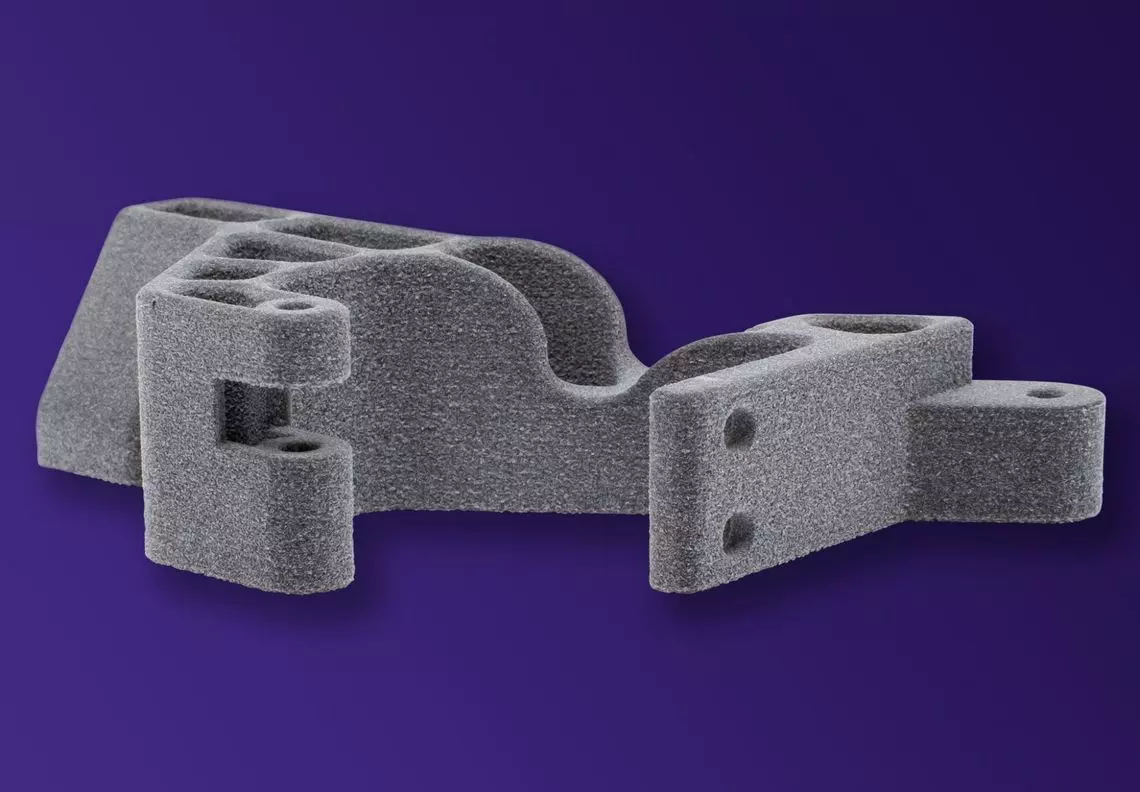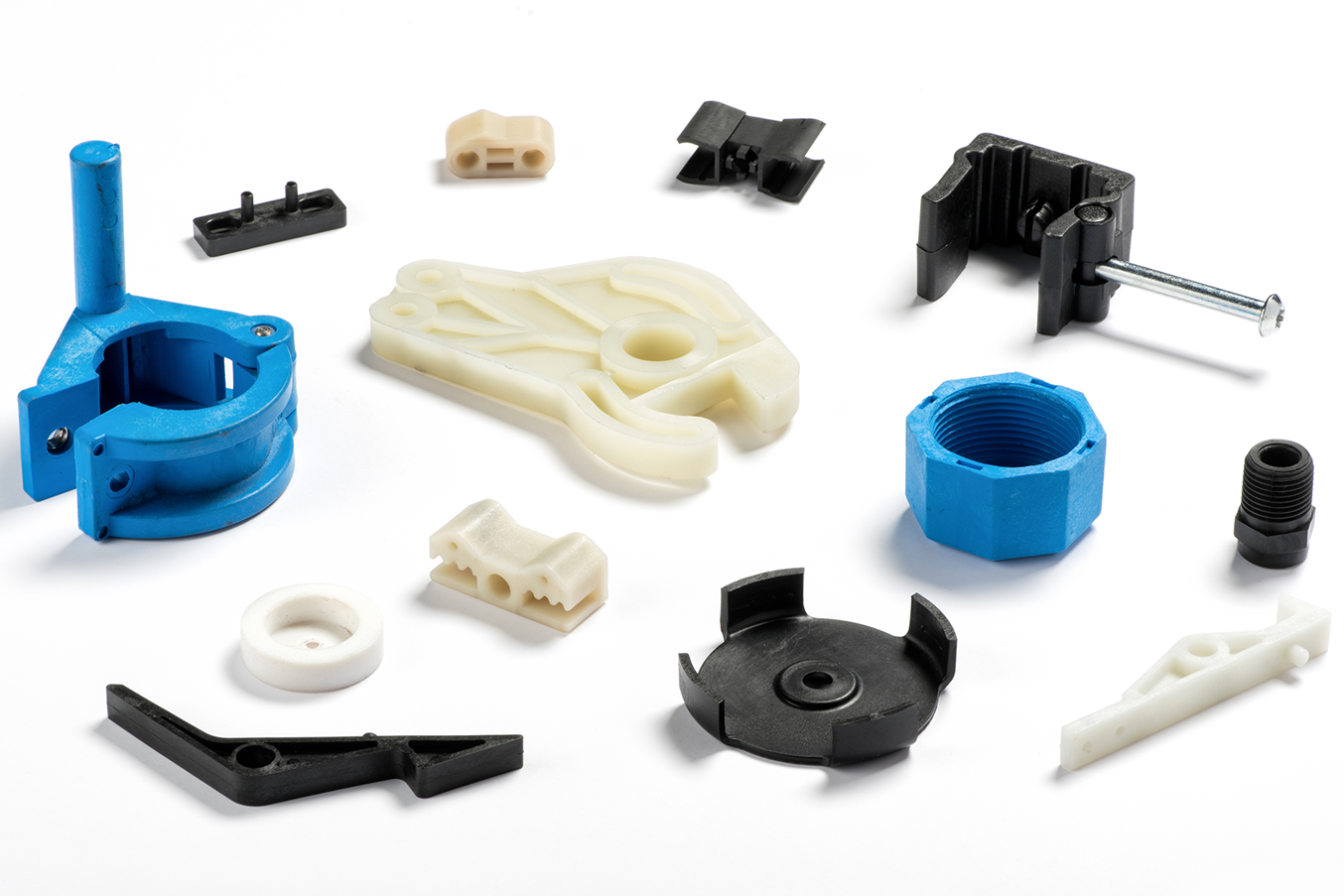What advantages does PA 11 offer over other plastics?
In addition to the major plus point of "sustainability", this particular polymer offers other attractive properties:
It has high mechanical strength (tensile strength MPa 54), which means it can withstand high loads and stresses well. It is thus ideally suited for applications where robustness and stability are important.
These properties make it suitable for components that are subjected to heavy mechanical stresses, such as automotive industry components (e.g. for e-cars and wall boxes).
It retains its shape and size very well under various environmental conditions, making it virtually predestined for use in applications where precise dimensions and shapes are important.
It is also resistant to many chemicals, including oils, greases, fuels and many solvents. Thus, it finds good application in the chemical industry or food industry.
Furthermore, PA 11 has good heat resistance (à 0.45 MPa 185 [°C] / à 1.81MPa 129 [°C] ). Thus, it can withstand high temperatures without compromising its mechanical properties. Compared to other polyamides, PA 11 exhibits lower moisture absorption.
Where does PA 11 find applications?
Due to its ductility, impact strength and fatigue strength, PA 11 is well suited for the conventional production of end components with high volumes.
- Flexural strength [MPa] 70
- Elongation to break [%] 40
- Hardness in Shore 80D
In the following, we present only a selection of possible areas of application:
Automotive industry: it is best suited for fields of application where chipping must not occur. In addition, it is statically discharged and can therefore be used excellently for electronic components. These 2 aspects, among others, illustrate that PA 11 is ideal for use in the automotive industry, for example for fuel lines, cable sheathing, coolant lines, air lines or protective covers.
Electronics industry: Due to its electrical insulation properties and chemical resistance, it is a popular choice for applications in the electrical and electronics industry. For example, it is ideal for cable runs.
Sports and leisure equipment: PA 11 is used in the manufacture of sports and leisure equipment such as ski boots, bicycle frames, tennis racket grips and protective clothing. It offers strength and impact resistance to meet the demands of these applications.
Medical applications: Due to its biocompatible properties and resistance to sterilization processes, PA 11 is also used in medical technology. It is used for the manufacture of medical devices and surgical instruments.
Consumer goods: PA 11 is also used in various consumer goods such as writing instruments, eyeglass frames, household appliances and jewelry.
These are just a few examples of the applications of PA 11. Due to its versatile properties and processability, it is used in a wide range of industries.
What is the manufacturing process for PA 11?
PA 11 is in powder form before being manufactured using 3D printing processes. 3D printed products made of PA 11 are a very good alternative in the industrial sector for the plastics ABS or PA6, which have proven themselves in injection molding.
They are manufactured using the additive manufacturing process "selective laser sintering" (SLS). It is ideally suited for prototypes, small series and models. The process is based on the use of a laser that selectively melts and solidifies the powder to build up layers of the desired object. To do this, a 3D model of the desired object must be available in advance. This model is then divided into layers to enable the printing process. Support structures are not needed, as the components are stabilized in the powder bed. A thin layer of the powdered material (e.g. PA 11 powder) is applied evenly to a build plate. A high-energy laser beam is focused and directed onto the areas of the current layer to be printed. The laser heats the powder above the melting point at the exposed areas, causing the powder particles to fuse together and form a solid layer. This layering process is repeated until the entire object is printed. After the printing process, the printed object is cooled in the powder chamber.
Subsequently, a cleaning process takes place and further finishing steps such as grinding, coloring or painting can be carried out.
You can read more about the SLS process here.
For particularly durable, stable plastic parts, the additive manufacturing process "Selective Absorption Fusion" (SAF) is recommended. It is suitable for series production, spare parts production and the manufacture of end-user parts. In this technology, an infrared-sensitive Hig Absorbtion Fluid is applied to the material powder. This is then fused with print heads to form the part. These steps are repeated layer by layer until the entire component is printed.
Here you can read more about the SAF process.
Conclusion – a remarkably versatile, sustainable plastic
Polyamide 11 (PA 11) is a high-performance bio-based plastic with remarkable technical properties. It is thermoformable, durable and sustainable because it is made from 100 percent sustainable castor oil. PA 11 offers attractive advantages such as high impact strength, chemical resistance and good dimensional stability. Because of these properties, this material is used in a variety of industries, including automotive, electronics, sports and recreational equipment, medical devices and consumer products. PA 11 is manufactured by selective laser sintering (SLS) 3D printing process, which enables precise and complex components. In addition, it can also be processed using "selective absorption fusion" (SAF) technology. In summary, PA 11 is a versatile plastic with a wide range of potential applications and environmental benefits. Do you have any questions about the material, the processing of components or about 3D printing in general? Our team of experts will be happy to help you at any time. Feel free to give us a call or send us an e-mail.







